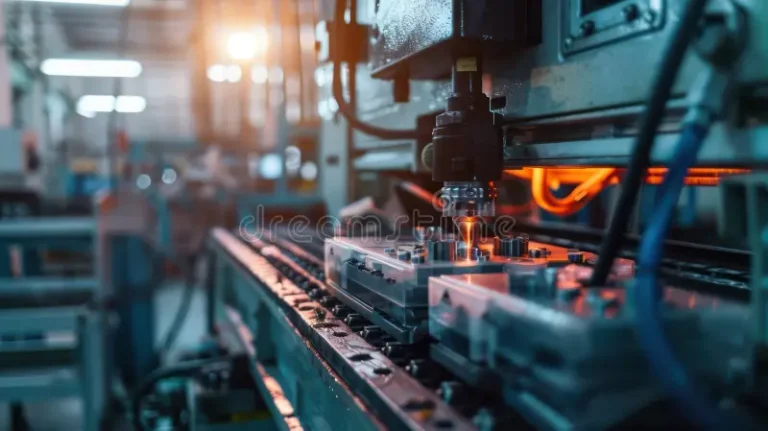Abatement technologies play a crucial role in maintaining the cleanliness of our environment and ensuring our safety. In simple terms, abatement technologies are methods or systems designed to reduce or eliminate pollutants and hazardous materials. These technologies are essential for protecting our health and the environment from harmful substances. In this article, we will explore what abatement technologies are, how they work, and why they are important for a healthier world.
What Are Abatement Technologies?
Abatement technologies are tools or systems used to control or remove pollutants from the air, water, and soil. The word “abatement” means reduction or decrease, so abatement technologies focus on reducing the amount of harmful substances in our surroundings. These technologies are used in various industries and settings to ensure that pollution levels are kept in check.
How Do Abatement Technologies Work?
Abatement technologies work by targeting and eliminating harmful substances. There are several different types of abatement technologies, each designed to handle specific kinds of pollutants. Let’s look at some common examples:
- Air Purification Systems: These systems remove pollutants from the air. They often use filters to trap dust, smoke, and other particles. Some air purifiers also use chemicals or ultraviolet light to kill germs and bacteria.
- Water Treatment Plants: These facilities treat water to remove impurities. They use various methods, such as filtration, chemical treatments, and sedimentation, to make water safe for drinking and other uses.
- Soil Remediation: This process cleans up contaminated soil. It can involve removing polluted soil and replacing it with clean soil or treating the soil with chemicals to break down harmful substances.
- Noise Abatement: This technology reduces noise pollution. It involves using barriers, soundproofing materials, or other techniques to lower the amount of noise in an area.
Why Are Abatement Technologies Important?
Abatement technologies are crucial for several reasons:
- Protecting Health: Pollutants can have serious health effects, including respiratory problems, heart disease, and cancer. Abatement technologies help reduce exposure to these harmful substances, making the air, water, and soil cleaner and safer.
- Preserving the Environment: Pollution can damage natural habitats and harm wildlife. By controlling pollutants, abatement technologies help protect ecosystems and biodiversity.
- Compliance with Regulations: Many countries have laws and regulations that require businesses and industries to limit their pollution. Abatement technologies help ensure that these regulations are met, avoiding fines and penalties.
- Improving Quality of Life: Clean air, water, and soil contribute to a better quality of life. Abatement technologies help create healthier and more pleasant living environments for everyone.
Types of Abatement Technologies
There are many types of abatement technologies, each designed for specific types of pollutants. Here are some examples:
1. Scrubbers
Scrubbers are devices used to remove gases and particles from industrial emissions. They work by passing the polluted air through a liquid or solid material that captures the pollutants. Scrubbers are commonly used in factories and power plants.
2. Catalytic Converters
Catalytic converters are used in vehicles to reduce harmful emissions. They convert toxic gases like carbon monoxide and nitrogen oxides into less harmful substances. This technology is essential for reducing air pollution from cars and trucks.
3. Biofilters
Biofilters use living organisms, such as bacteria or plants, to remove pollutants from the air or water. They work by breaking down harmful substances into less harmful ones. Biofilters are often used in wastewater treatment and air purification.
4. Electrostatic Precipitators
Electrostatic precipitators are devices that remove particles from the air using electrical charges. They are effective at capturing dust, smoke, and other small particles. These devices are commonly used in industrial settings.
Benefits of Abatement Technologies
Abatement technologies offer numerous benefits:
1. Health Benefits
By reducing exposure to harmful pollutants, abatement technologies help prevent health problems. Cleaner air and water contribute to overall better health and well-being.
2. Environmental Protection
Abatement technologies protect natural resources and ecosystems. By controlling pollution, these technologies help maintain the balance of nature and preserve wildlife habitats.
3. Economic Advantages
While implementing abatement technologies can require an initial investment, they often lead to long-term savings. For example, reducing energy consumption through cleaner technologies can lower operational costs for businesses.
4. Regulatory Compliance
Using abatement technologies helps companies comply with environmental regulations. This can prevent legal issues and fines, making it a smart business decision.
Challenges and Future of Abatement Technologies
While abatement technologies offer many benefits, there are also challenges to consider:
1. Cost
The initial cost of installing and maintaining abatement technologies can be high. This can be a barrier for some businesses or organizations.
2. Technology Development
As pollution and environmental challenges evolve, abatement technologies must also advance. Continuous research and development are needed to create more effective and efficient solutions.
3. Implementation
Integrating new technologies into existing systems can be complex. Businesses may face challenges in adapting their operations to accommodate new abatement technologies.
4. Public Awareness
Educating the public about the importance of abatement technologies is crucial. Greater awareness can lead to better support for environmental initiatives and regulations.
The Future of Abatement Technologies
The future of abatement technologies looks promising. Innovations in technology are constantly emerging, providing new solutions for pollution control. Some areas of focus include:
1. Advanced Materials
Researchers are developing new materials with enhanced properties for pollution control. These materials can improve the efficiency of filters and scrubbers.
2. Smart Technologies
Smart technologies, such as sensors and automation, are being integrated into abatement systems. These technologies can provide real-time monitoring and control, improving performance and efficiency.
3. Sustainable Practices
There is a growing emphasis on sustainable and eco-friendly practices in abatement technologies. This includes using renewable energy sources and minimizing waste.
4. Global Collaboration
Addressing pollution and environmental issues requires global cooperation. International partnerships and agreements can help advance abatement technologies and promote widespread adoption.
Conclusion
Abatement technologies are essential for creating a cleaner, safer, and healthier environment. By reducing and eliminating pollutants, these technologies help protect our health, preserve natural resources, and ensure regulatory compliance. Despite challenges, ongoing advancements in abatement technologies offer hope for a more sustainable future. Understanding and supporting these technologies can make a significant difference in our world.








